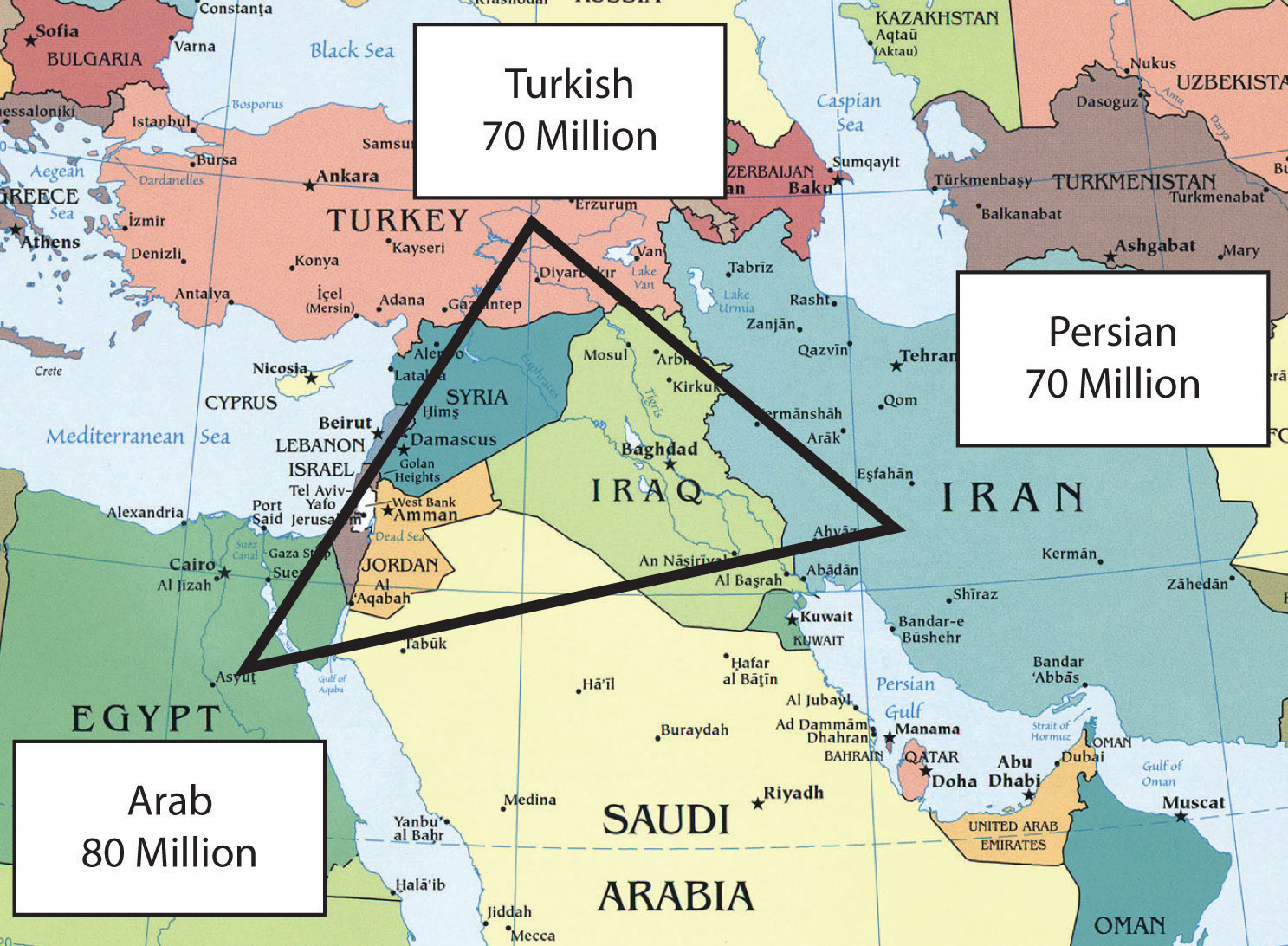
As the war between Israel and Iran rages on over the latter’s nuclear program, a look at its antecedents and underlying politics provides the right context to comprehend the circumstances surrounding it.
Iran’s nuclear program dates back to the 1950s, under the then Shah of Iran, Mohammad Reza Shah Pahlavi. In 1979, Ayatollah Khomeini led a revolution in the country, overthrowing the Shah and establishing a theocracy that declared enmity against the United States and vowed to expand the revolution across the Middle East and beyond.
Until 1979, Iran’s nuclear program was Western-supported and civilian-oriented, aimed at achieving rapid technological advancement.
Following the revolution, the West terminated its support for the program, while the new regime in Tehran suspended it, arguing that it was un-Islamic in the first place.
However, in the 1990s, Iran quietly resumed nuclear development, citing its need for nuclear energy for peaceful use. By 2000, Iranian defectors and Western intelligence agencies had begun suspecting Iran of pursuing a nuclear weapons capability.
The United States and its Western allies oppose Iran acquiring a nuclear weapon for fear that its regional rivals, e.g. Turkey, Saudi Arabia, and Egypt, may equally pursue their own nuclear programs, thereby triggering a nuclear arms race across the already volatile Middle East.
The US is worried that a nuclear-armed Iran could be more audacious in supporting its proxy militias in Iraq, Yemen, and, until recently, Syria and Lebanon, which threaten U.S. interests and allies in the region. There are also concerns that with nuclear weapons in Iran’s hands, the risk of accidental or intentional nuclear conflict in the region is greater.
Besides, the US believes that if, by any means, Iran manages to acquire nuclear weapons, its (US) allies in the region and elsewhere will lose confidence in its security guarantees, which will hugely affect the potency of its ‘global leadership’ and diplomatic influence.
Meanwhile, Iran, which is a signatory to the Nuclear Non-Proliferation Treaty (NPT), has maintained that its nuclear program is for peaceful use, hence doesn’t contravene the treaty that bans non-nuclear-weapon states from developing or acquiring nuclear arms.
Of course, the US and Israel never believe Iran. Israel is particularly worried as it considers Iran’s nuclear program a direct threat to its very existence. After all, Iran’s anti-Israel rhetoric and threats to eliminate the Jewish state have been particularly constant. Interestingly, in their tactical PR strategy to attract the solidarity and sympathy of global powers, successive Israeli politicians have always exaggerated Iran’s threats against Israel; that way, they secure disproportionately favourable concessions and privileges for Israel on the world political stage.
Furthermore, Israel always leverages its strong alliance with the United States and its Western allies to push for sustained pressure on Iran to compel it to abandon its nuclear program.
Ironically, it’s an open secret that Israel has nuclear weapons, which it, for tactical reasons, neither confirms nor denies.
On their part, and regardless of their professed solidarity with Iran in this war, Persian Gulf Arab countries, Egypt, and Jordan, believe Iran pursues a nuclear weapon capability to leverage the political weight that comes with it to dominate them in geopolitical struggle.
Now, the International Atomic Energy Agency (IAEA), which had been involved in Iran’s nuclear program before the 1979 revolution, resumed inspecting Iran’s nuclear sites in 2003 after some Iranian opposition exposed undeclared Natanz and Arak nuclear facilities in Iran in 2002.
Since then, the United States has accused Iran of pursuing a nuclear weapon capability, which Iran has always denied, insisting that its nuclear program is peaceful.
The United Nations Security Council imposed economic sanctions on Iran, while the United States unilaterally imposed more sanctions on it.
Many diplomatic initiatives failed to break the resultant deadlock, while tensions in the region continued to rise.
There was, however, a temporary breakthrough when the United States, during the Barack Obama administration, China, Russia, France, the United Kingdom, in addition to Germany, on the one hand, and Iran, on the other, signed the Joint Comprehensive Plan of Action (JCPOA) under which Iran agreed to reduce uranium enrichment, dismantle atomic reactors, and accept regular inspections of its nuclear facilities by International Atomic Energy Agency (IAEA). In return, economic sanctions were lifted.
Israel was never happy with that agreement, crying foul that it was designed in such a way that it would eventually allow Iran to acquire a nuclear weapon capability.
Saudi Arabia was also suspicious about some provisions of the agreement and equally concluded that the agreement provided a window for Tehran to acquire nuclear weapons eventually. Since then, it reportedly went ahead to secretly launch a nuclear program with China, Russia, South Korea, France, and, speculatively, Pakistan, as technical partners. However, there has been no confirmed report about the level it has achieved so far.
In 2018, President Donald Trump unilaterally withdrew from the JCPOA, rendering it effectively useless. He also went ahead to restore U.S. sanctions on Iran. In return, Iran resumed limiting the IAEA’s access to its nuclear facilities as it resumed uranium enrichment.
As economic sanctions continued to cripple Iran’s economy, it accelerated the process of uranium enrichment anyway. Meanwhile, Israel, using its notorious intelligence agency, Mossad, managed to assassinate several key Iranian nuclear scientists and conducted many aerial attacks on Natanz and other nuclear facilities in Iran.
Upon his return to the US presidency, Donald Trump demanded Iran submit to fresh negotiations. Though Iran initially resisted, insisting on reviving the JCPOA, it gave in, paving the way for the negotiations to start in Muscat, Oman.
However, after several rounds of talks without headway, tensions began to rise again as the end of the 60-day ultimatum given by Donald Trump for the talks to conclude was fast approaching. Trump had warned Iran of military action should the talks fail.
Meanwhile, on 13 June 2025, and less than two days before what could have been the last round of talks between the United States and Iran, Israel surprised the whole world by launching aerial bombardments on Iran and ground operations by Mossad agents scattered across Iran.
A full-scale war erupted between the two countries, with Iran firing hundreds of ballistic missiles and drones into Israel, and Israel using fighter jets and drones to attack Iran.
Now that the United States has attacked Iran’s three major nuclear facilities, including the purportedly 800-meter-deep Fordow nuclear facility bunker, it remains to be seen to what extent the US involvement will affect the course of the war and its implications in the aftermath.
Though there have been cease-fire initiatives, the war doesn’t seem to come to an end anytime soon, given the rigidity that characterises the stances of the parties involved. This is even though the longer the war takes, the greater the risk of further escalation and wider regional conflict.
Provided by SyndiGate Media Inc. (
Syndigate.info
).









Leave a Reply